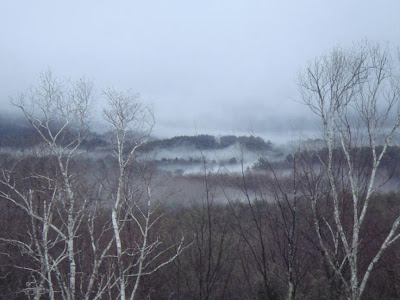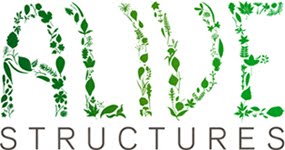
This weekend, we've been lucky enough to get out of the city and visit friends in Woodstock, NY. We've been enjoying tromps in the snow next to a frozen reservoir and watching the mist on the Catskill Mountains in the morning and the red sunset in the afternoon.

My friend is collecting wood branches to make a raised bed for growing vegetables in spring that will provide an extra level of protection against the groundhogs. He's also planning to create a sound buffer against the road by planting native shrubs in between the existing trees. I recommended he use Kalmia latifolia, Ilex glabra, Ilex verticillata, and Ilex opaca, all attractive native shrubs that can be easily found in the woods surrounding the property. When we went for a walk we saw small trees heavy with red berries, creeping winterberry, and kalmias throughout the woods.

 The pristine quality of the water and all the forests in Woodstock reminds me of the source of New York City's drinking water. NYC and NY State have both worked together to keep the land surrounding the Catskill reservoirs undeveloped and free of industrial activity in order to maintain clean unfiltered water. Now, NYC and the State have a disagreement over the extraction of Natural Gas in NYC's drinking watershed. The system of extraction of natural gas is called "Fracking". According to NPR the issue is like this:
The pristine quality of the water and all the forests in Woodstock reminds me of the source of New York City's drinking water. NYC and NY State have both worked together to keep the land surrounding the Catskill reservoirs undeveloped and free of industrial activity in order to maintain clean unfiltered water. Now, NYC and the State have a disagreement over the extraction of Natural Gas in NYC's drinking watershed. The system of extraction of natural gas is called "Fracking". According to NPR the issue is like this:"Environmentalists and the natural gas industry are getting ready for a battle in Congress over something known as "hydraulic fracturing." "Fracking," as the industry calls it, involves injecting a million gallons or more of water and chemicals deep underground to pry out gas that's locked away in tight spaces. Environmentalists want the federal government to regulate the practice because, in some cases, fracking may be harming nearby water wells. The industry says regulation should be left up to the states."
Companies practicing fracking don't have to report what chemicals they're injecting into the ground and are exempt from the Safe Drinking Water Act. After decades of protecting the land and the water in our watershed it could become seriously compromised by lobbyists such as the Independent Petroleum Association of America and pioneers of hydraulic fracturing like Halliburton. Of course the leaders of those organizations probably only drink bottled water.










































